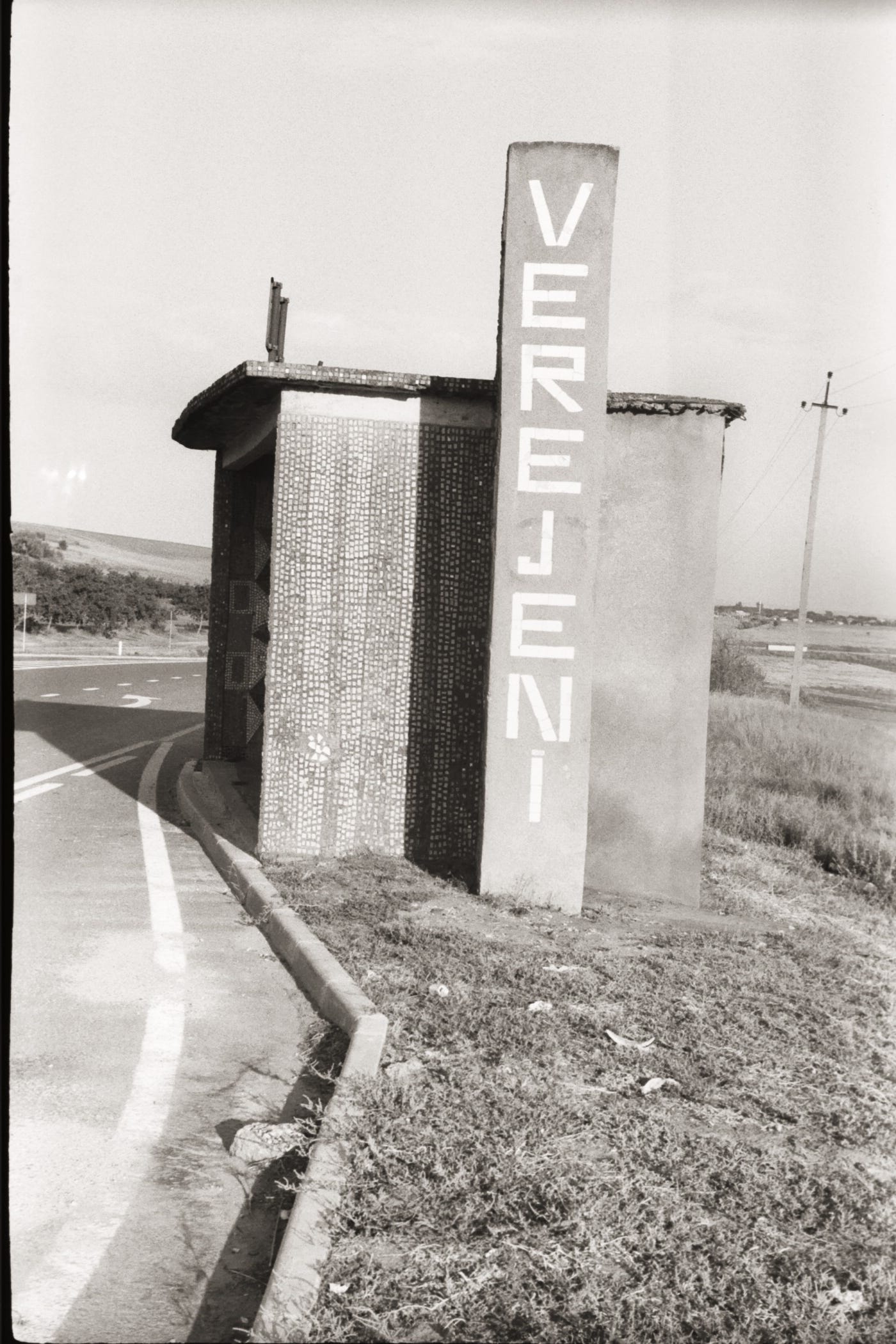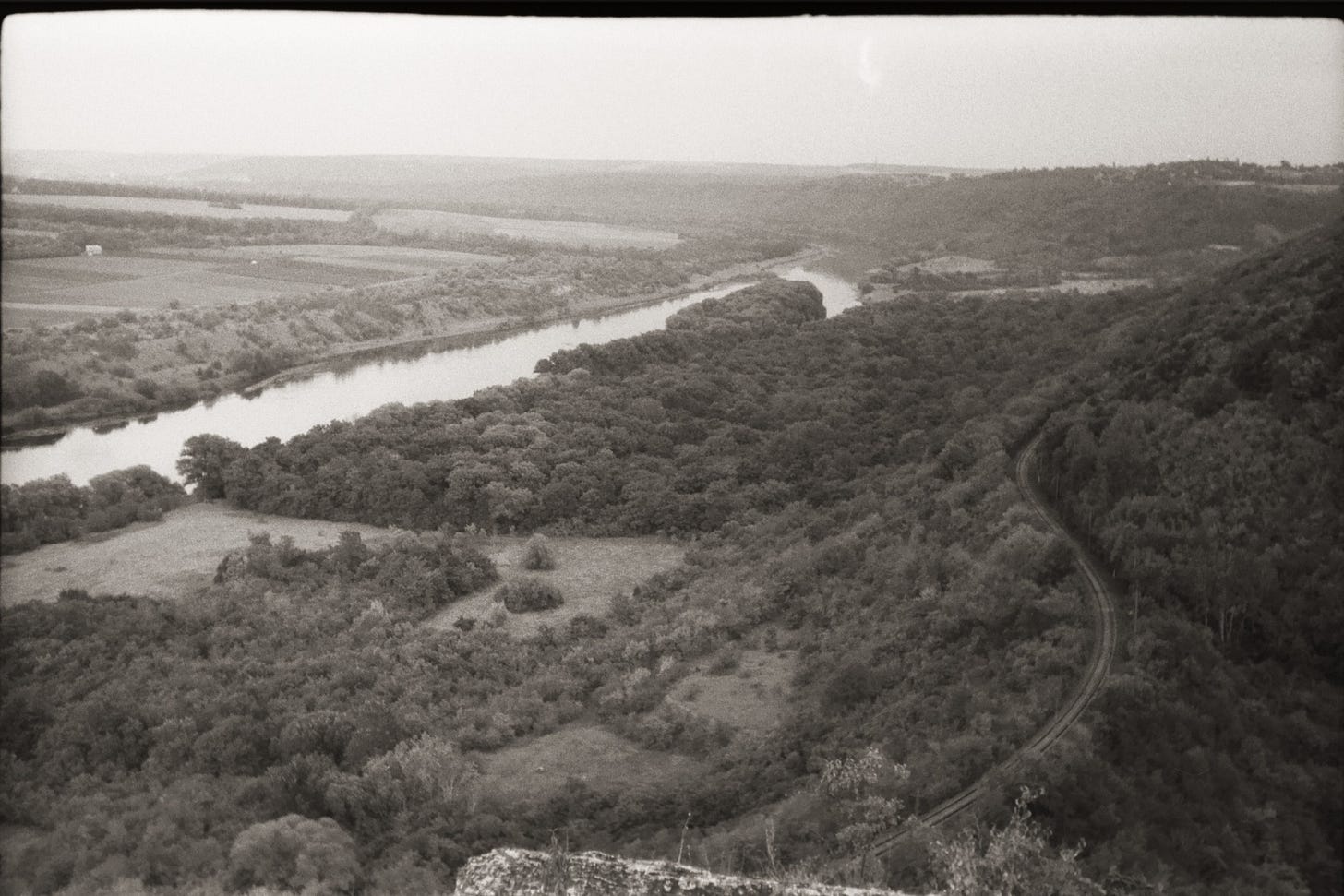Bouldering in Moldova: A Slowly Growing Sport From Chisinau to the Far North
A guest article about exploring Moldova
This is a guest article by Dániel Kemény.
Following the success of newly introduced climbing events in the Paris Olympics, the sport of bouldering has exploded in popularity across the globe, gradually even in Moldova too. This article combines my summer experiences with subsequent interviews I’ve done, to show a sliver of this sport in Moldova.
Moldova’s only bouldering gym is located in Chisinau, sandwiched between residential blocks, at Bd. Independenței 32/2. A flight of exposed metal stairs lead up to the single open space, large enough for a changing room, reception desk, the bouldering walls and a small mezzanine above.
The climbing walls themselves are great but there aren’t many of them, a strong climber can climb all available routes in a session. Speaking with regulars, the main attraction is the gym, featuring weights and good training equipment, and the MoonBoard, a digital training wall providing thousands of routes. The gym also organizes competitions, marketed on their social media.
This type of gym, focusing on the upper end of climbing, creates a small, but close-knit community. Many of the climbers I spoke to were drawn to the sport due to this, as well as the health benefits. Each time I went, I began seeing more and more familiar faces, all strong climbers. The gym staff I spoke to described their clients as typically above 30, holding stable office jobs, particularly in IT. In this gym, Russian is the predominant language, however many foreigners also frequent the gym and I found myself speaking English multiple times.
The international growing popularity of bouldering has been felt at the gym, although at a slow rate. Gym staff described this growth to me as extremely slow, mainly due to a lack of finances, making the gym’s further development difficult. Elsewhere, however, the growth appears steadier. Speaking with Moldovan climber and blogger Valentyn Kotelnikov, he told me that gym facilities and outdoor opportunities have improved over the last few years. Even if only a few hundred people actively climb, more outdoor bolted sport routes, for rope climbing, and new outdoor bouldering areas have been created, discovered and documented in the last 10 years. Still, most gym climbers boulder exclusively at the gym, although the gym has crash-pads, the portable mats needed for outdoor bouldering, which clients can rent.
One such newer outdoor location is near Verejeni, in the northern Ocnița district. It was first mentioned by Kotelnikov in 2020, when he identified 14 different rock faces and 12 bouldering routes, ranging in level from 5a to 6b+. The location is picturesque, the soft limestone cliff having broken into bite-size boulders up to 5 meters tall, each offering Swiss cheese handholds wherever you look.
It is here that two friends and I drove with the rented crash-pads in late August.
The journey was classically Moldovan, roads of varying quality, mandatory watermelon stops along the way, and fantastic pieces of art dotted along the road, intricately detailed signs of each district, and wonderfully colourful, unique bus stops.
Nearing Verejeni, we left the paved road, and found ourselves turning off into a field. This unmarked track eventually led around a small forest, and presented us with our camping spot, directly above the boulders. The view was incredible, the Dniester flowing beneath us, occasional trains running alongside the river below. Across the river we could see a small Ukrainian village. As night fell, we sat by our campfire and watched distant lightning over the nearby hills, and slept on the crash-pads.
While we were there, we only encountered a few groups of people, some tourists in the daytime, just looking at the view, and a group of younger people in the evening, partying. Compared to the popular ‘Heart of Moldova’ viewpoint at Naslavcea, one village away, this was much less trafficked. The state of the boulders reflected this. Although they were only located a few meters below the viewing point, the path that led to them was fully overgrown, we only stumbled upon it accidentally. Before even chalking the rock for grip, we spent a good amount of time tidying the area, as it was full of broken glass, beer cans and other trash, none great to land on.
As a note, late Moldovan August is not perfect weather for outdoor climbing. The rocks provided little shade, so by 11 in the morning we were hiding out in the bushes between turns with the air shimmering above the unshaded ground. My phone’s protective screen, accidentally left out in the sun, melted and bubbled up.
The routes we managed to climb were immensely satisfying, the difficulty perfect, the holds secure, and whoever topped out stood up and was immediately greeted by the fantastic view below.
Bouldering and rock climbing in general is growing in popularity in Moldova, something that can be felt by the expanding social media presence, attendance at gyms and new routes that pop up. In general however, the sport is still unknown in the country, reflected most by the incredulous gazes of those staring down at us from on top of the rock — what on earth are these half-naked guys doing?
This, however, may slowly change. The country’s natural beauty and great limestone offer plenty of rock faces to discover, and the growing crop of indoor climbers may set their sights outdoor too.







